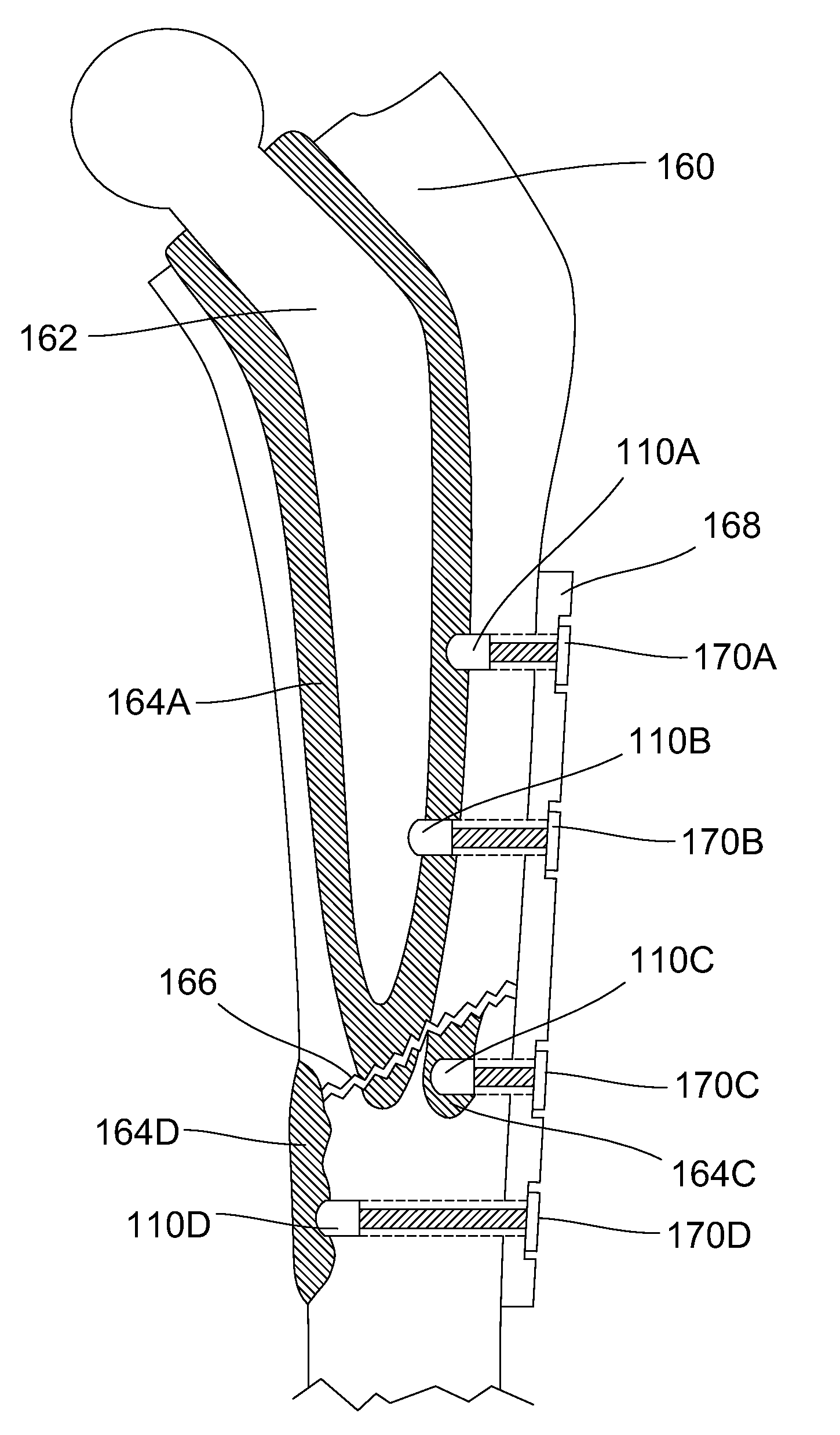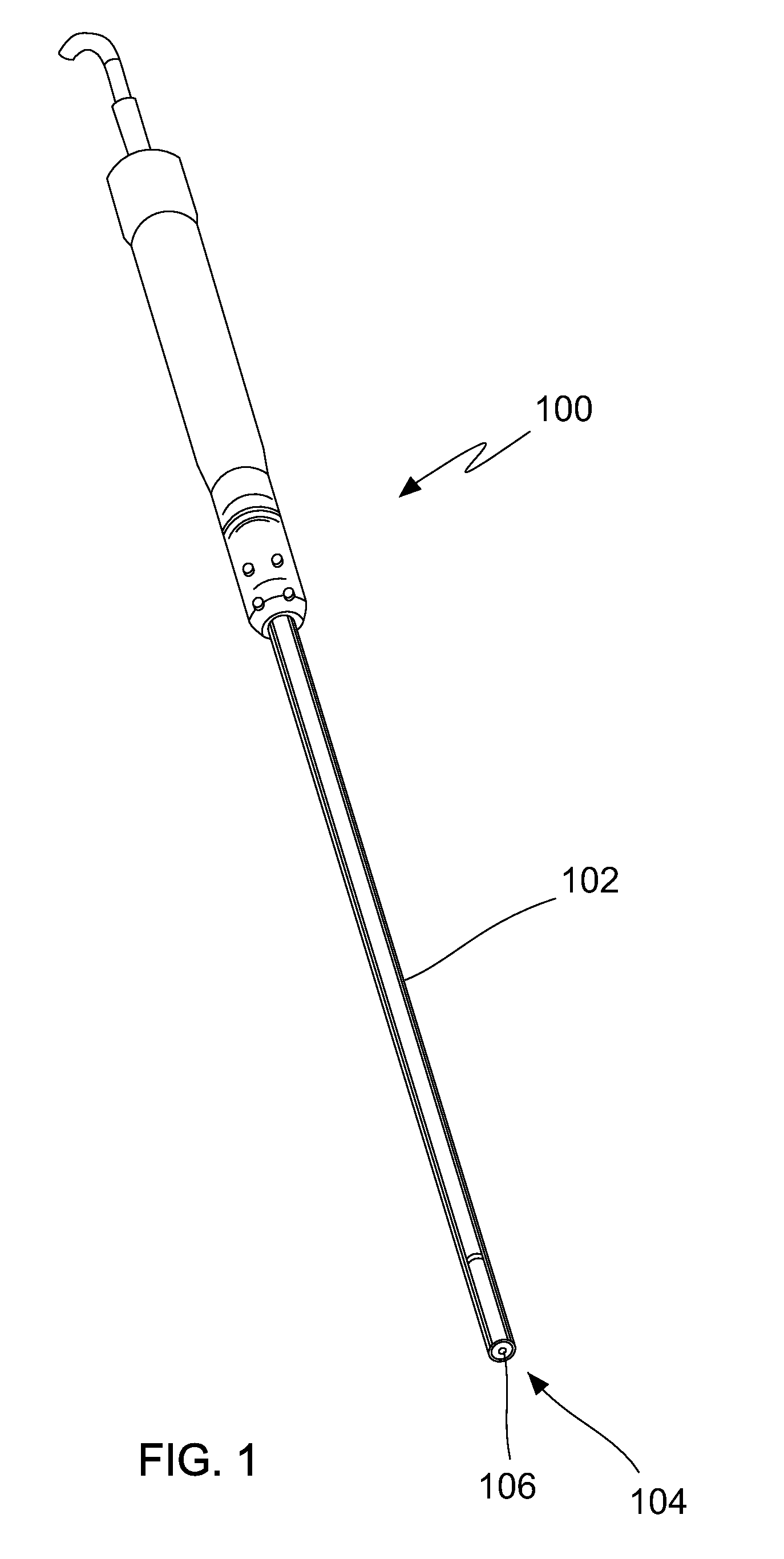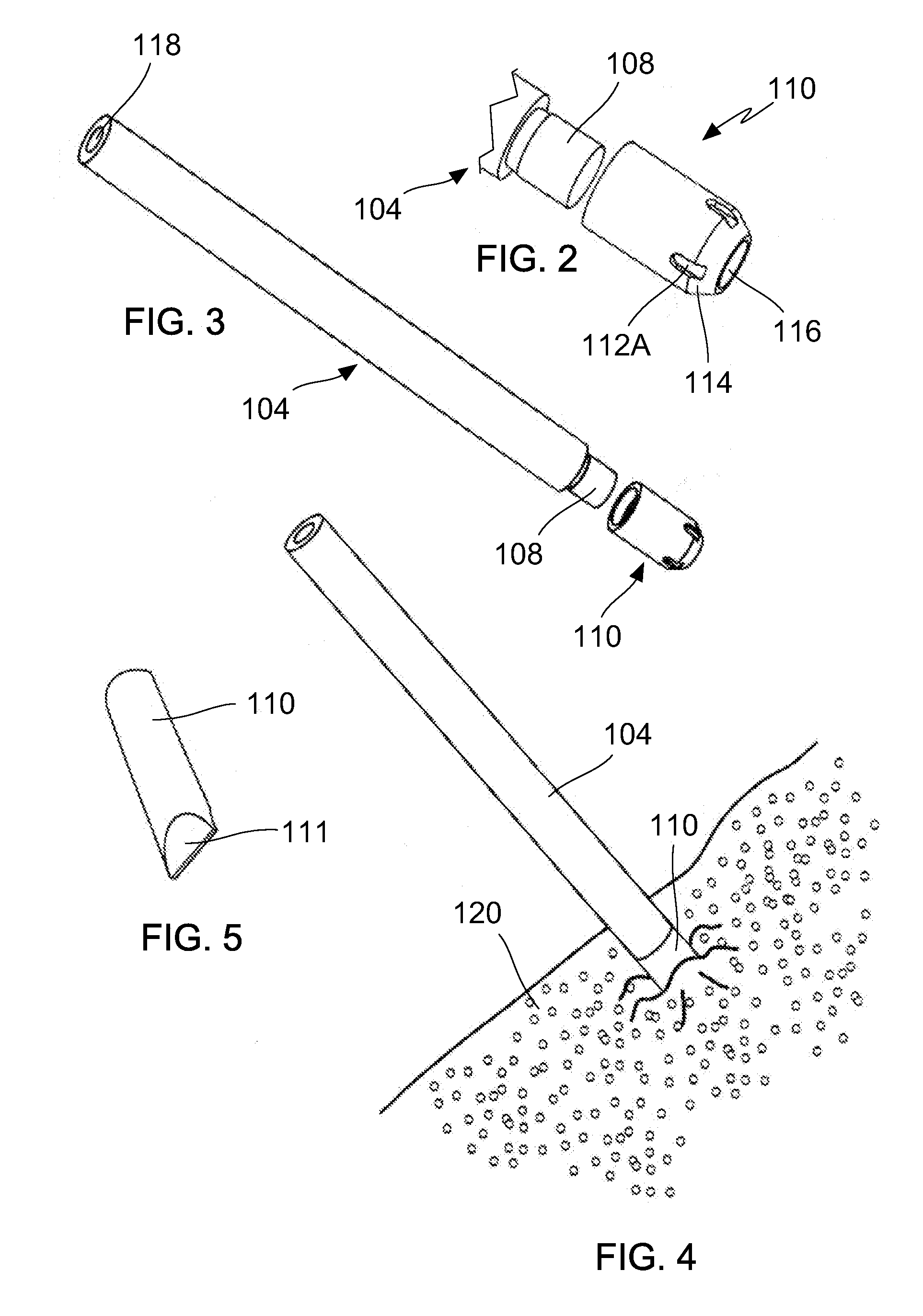Methods and devices for utilizing bondable materials
a technology of bondable materials and methods, applied in the direction of ligaments, shoulder joints, prostheses, etc., can solve the problems of loosening of bondable materials, time-consuming and potentially damaging to the tissue, and loosening of implants,
- Summary
- Abstract
- Description
- Claims
- Application Information
AI Technical Summary
Benefits of technology
Problems solved by technology
Method used
Image
Examples
Embodiment Construction
[0075]The invention relates to the devices and methods for the utilization of bondable materials and bondable materials, fixation and fastening of tissue to tissue, an implant to tissue, and an implant to an implant both inside and outside the body. The invention additionally relates to removing and anchoring implants to bondable materials and / or other biocompatible materials, anchoring implants using previously implanted and hardened bondable materials, and fixation using vibratory energy, mixing, solidifying, bonding, and / or mechanical interlocking of materials. The present invention also relates to the use of an energy source to install and / or remove an implant or bondable material or to facilitate the solidification and / or polymerization of a bondable material
[0076]The methods and devices disclosed herein may be used in conjunction with any medical procedure on the body. The stabilization, fastening, and / or repair of tissue or an implant may be performed in connection with any m...
PUM
| Property | Measurement | Unit |
|---|---|---|
| Energy | aaaaa | aaaaa |
Abstract
Description
Claims
Application Information
 Login to View More
Login to View More - R&D
- Intellectual Property
- Life Sciences
- Materials
- Tech Scout
- Unparalleled Data Quality
- Higher Quality Content
- 60% Fewer Hallucinations
Browse by: Latest US Patents, China's latest patents, Technical Efficacy Thesaurus, Application Domain, Technology Topic, Popular Technical Reports.
© 2025 PatSnap. All rights reserved.Legal|Privacy policy|Modern Slavery Act Transparency Statement|Sitemap|About US| Contact US: help@patsnap.com



